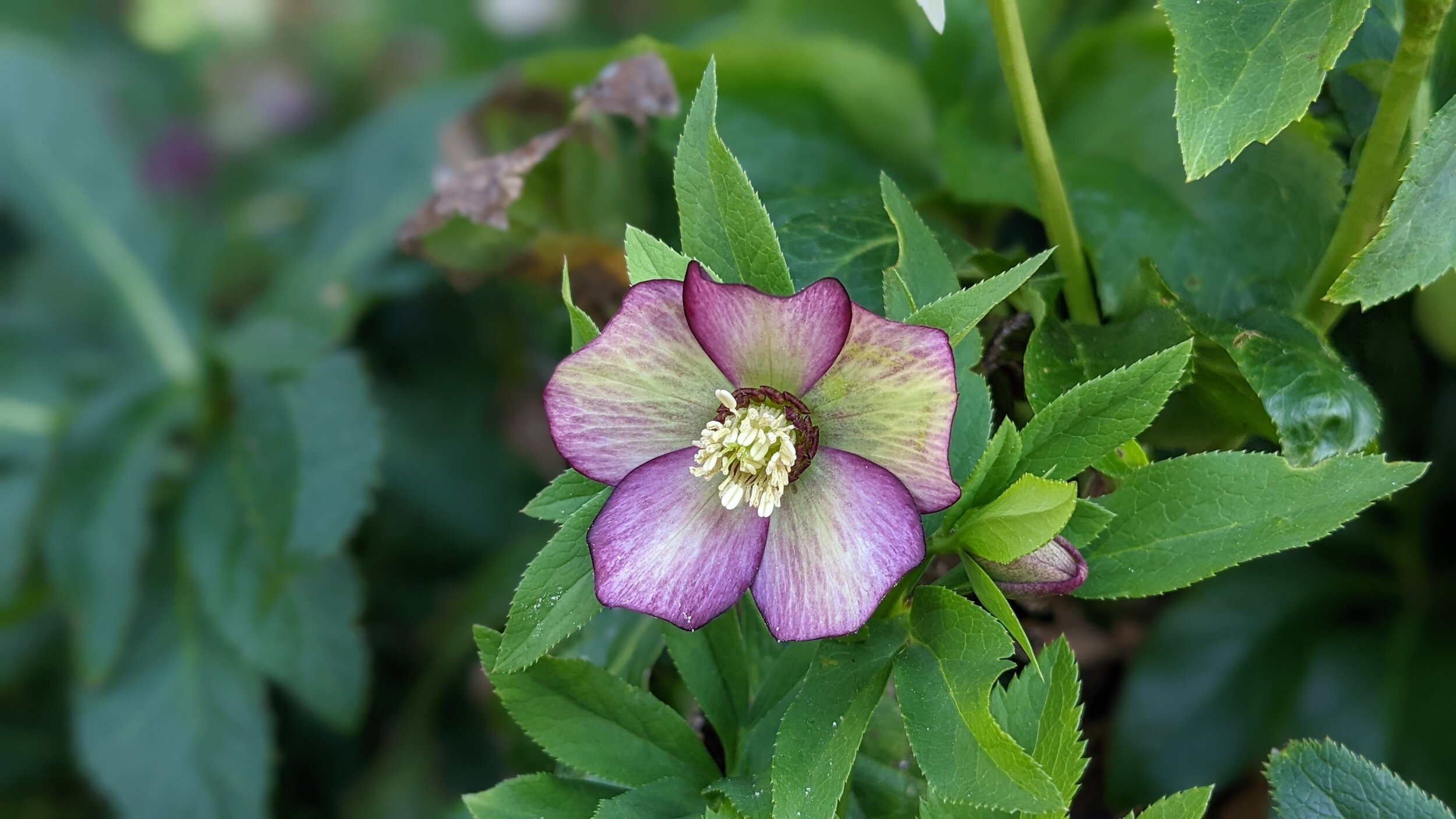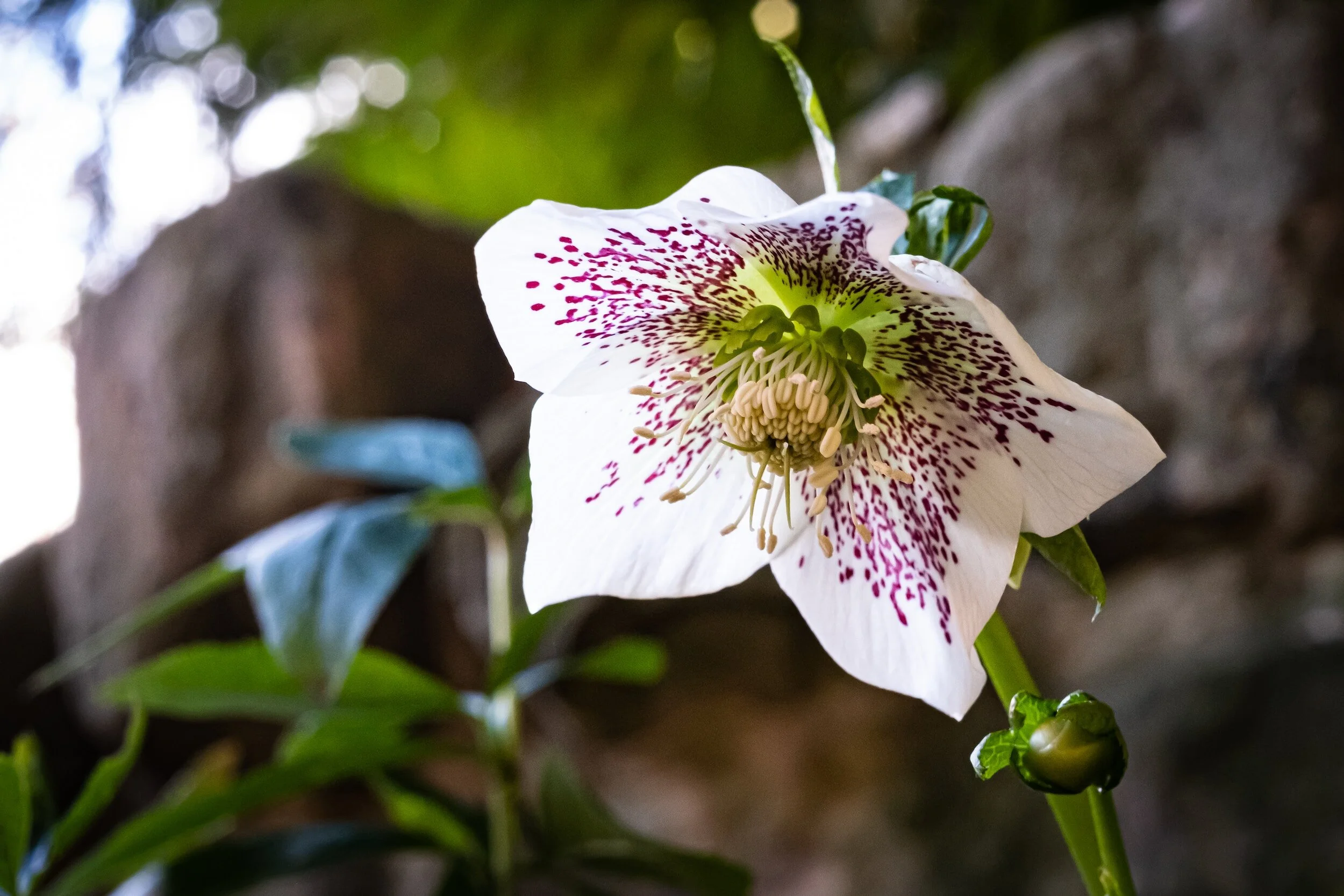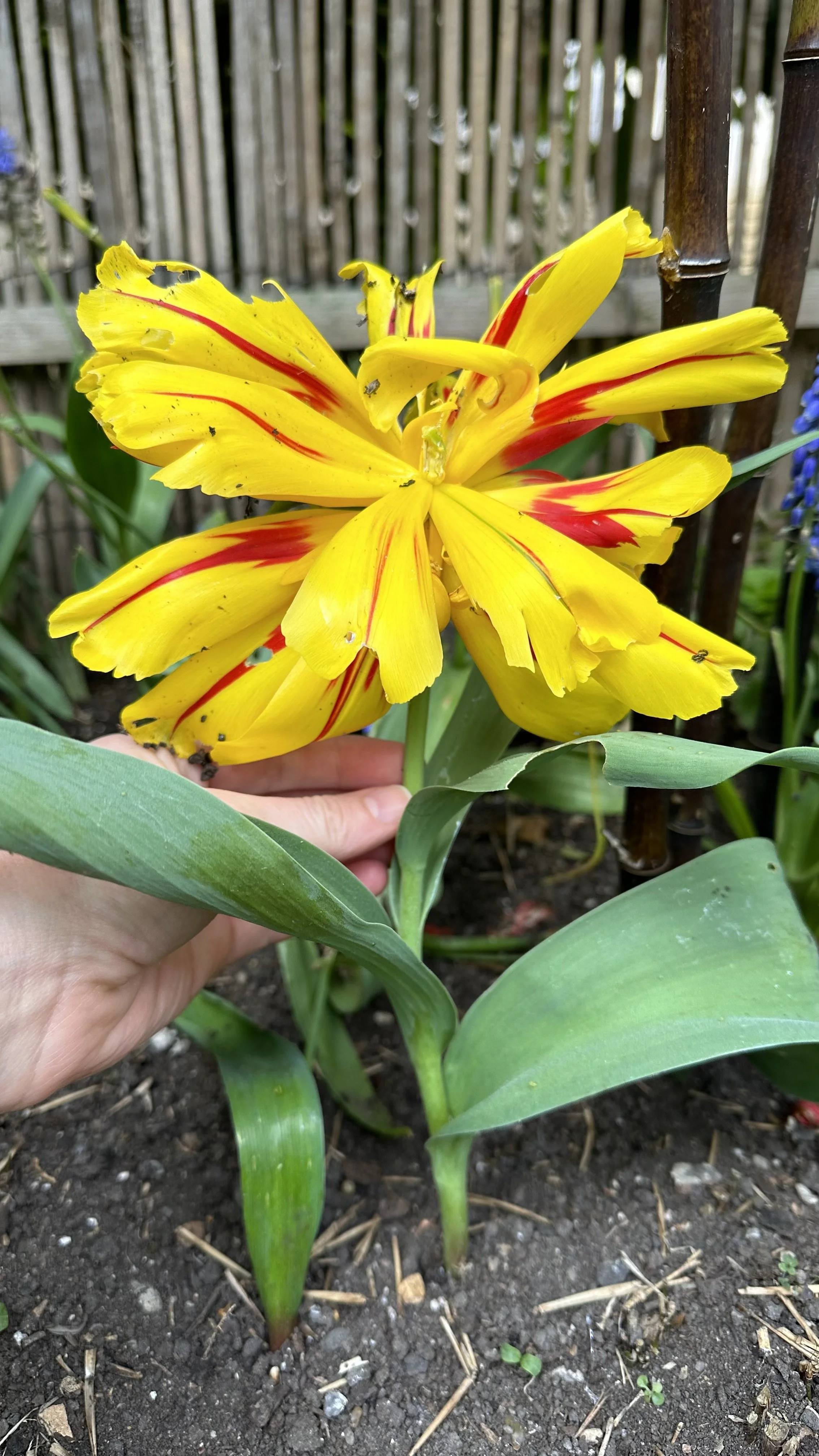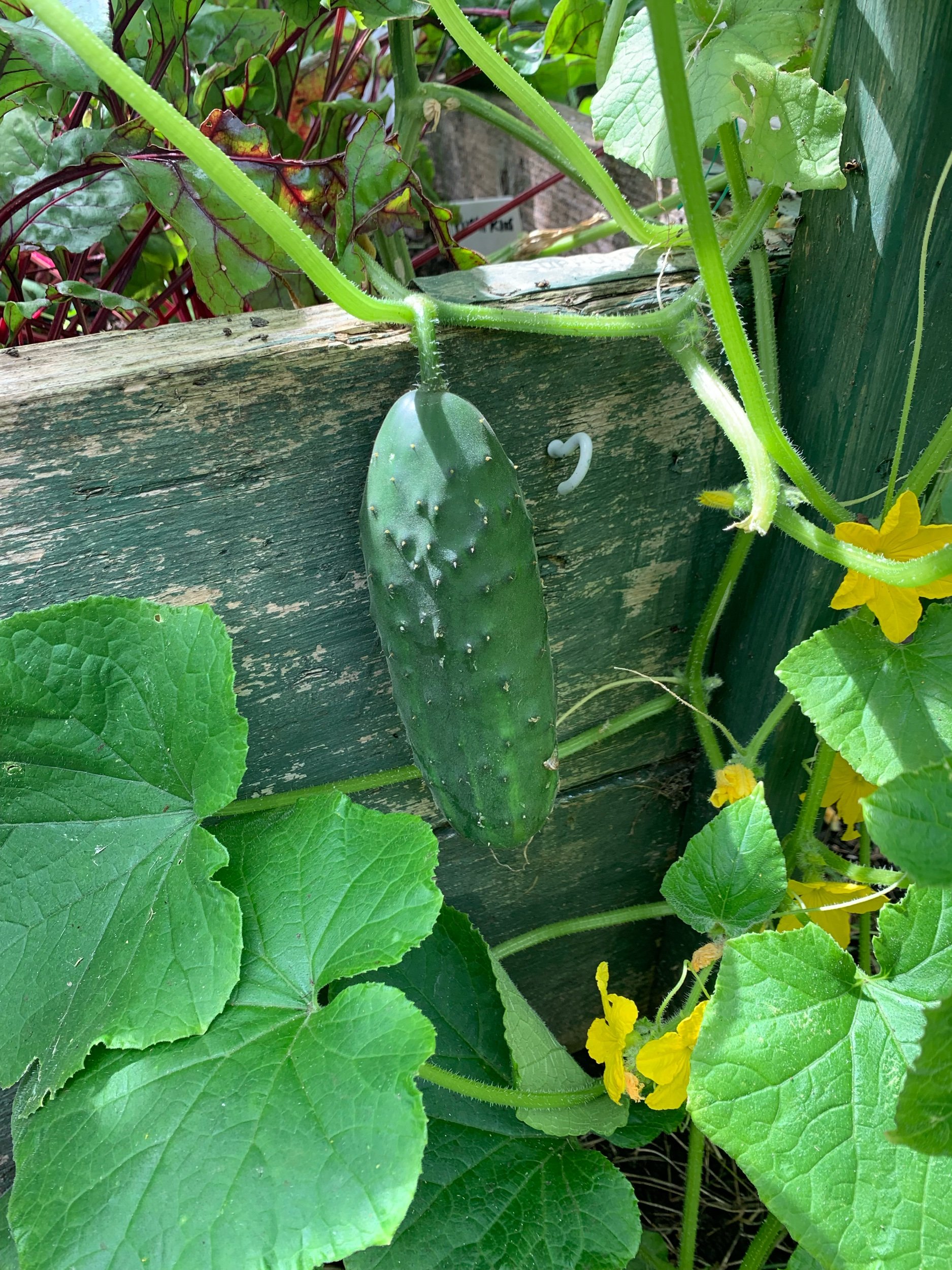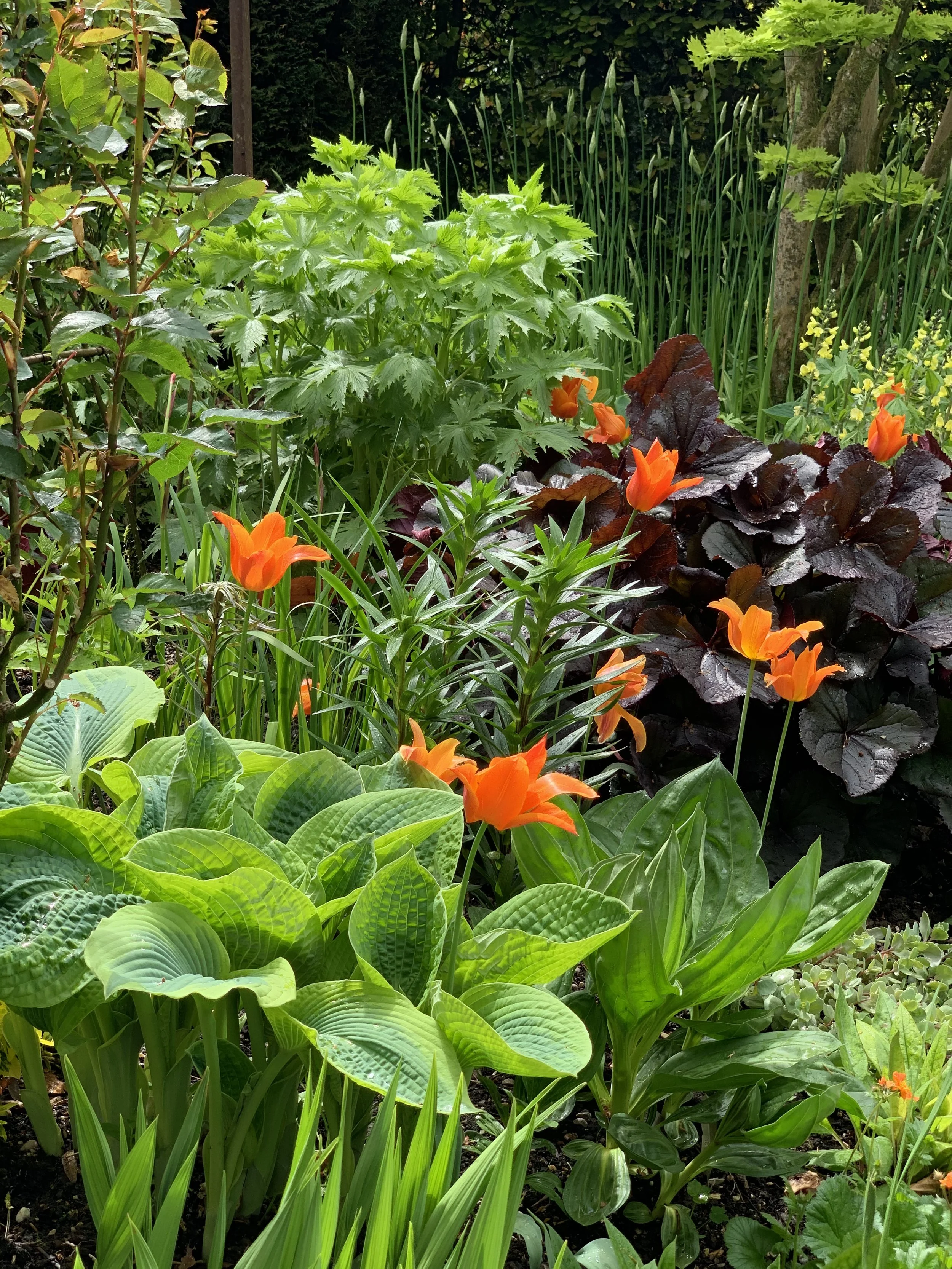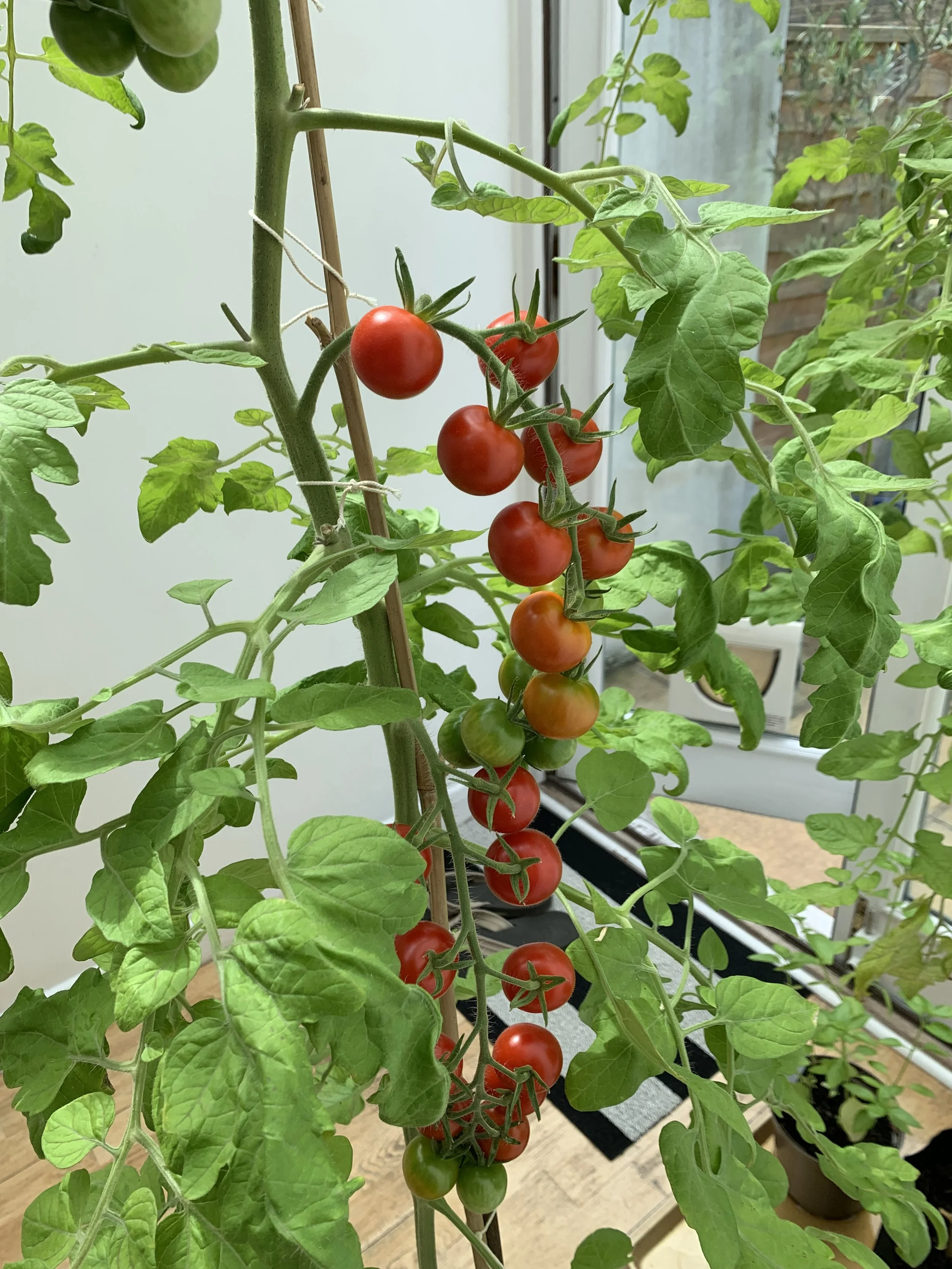How to Grow Hellebores in Pots
This article has links to products that I may make commission from.
Hellebores, with their enchanting blooms and resilience, have a way of bringing joy to the garden, especially during the colder months when other plants are hibernating.
If you're intrigued by the idea of growing these captivating plants in pots, either to enhance your garden space or to bring a touch of nature indoors, you're in for a fun journey.
This guide will walk you through every step of nurturing hellebores in containers, from choosing the right pot to seasonal care tips, ensuring these charming plants thrive under your care.
To learn more about growing hellebores, check out my guide What To Do With Hellebores in Summer.
The Basics of Hellebores
Description and Varieties
Characteristics:
Hellebores are characterized by their robust, leathery leaves and bowl-shaped flowers.
These flowers come in a range of colors, including white, green, pink, purple, and near-black.
Varieties:
There's a wide variety of hellebores. The 'Helleborus Onyx Odyssey', for instance, offers dark, nearly black flowers, while others like the 'Helleborus Niger' present pristine white blooms.
Each variety differs slightly in terms of flower color, size, and shape, but all share a common resilience and beauty.
Here is my favorite hellebore to grow:
Growing Zones and Size
Hardiness Zones:
Hellebores are hardy in USDA zones 4 through 9, making them suitable for a wide range of climates.
They can tolerate winter temperatures and are often one of the first plants to bloom as the weather warms.
Size:
The size of hellebores can vary depending on the species and growing conditions.
Typically, they reach a height of 12 to 18 inches and can spread about the same width.
Their compact size makes them ideal for container gardening.
Flowering and Foliage
Flowering Season:
Hellebores are known for their early flowering season.
They usually start blooming in late winter or early spring, bringing color to the garden when most other plants are still asleep.
Foliage:
The foliage of hellebores is another attractive feature.
The leaves are often dark green and can be either glossy or matte.
Some varieties have serrated or lobed leaves, adding to their ornamental value.
Longevity and Maintenance
Perennial Nature:
As perennials, hellebores will return year after year.
They are long-lived plants, often thriving in the same spot for many years with minimal care.
Low Maintenance:
Hellebores require relatively low maintenance.
Once established, they need little care beyond occasional watering and feeding, and they are generally resistant to pests and diseases.
Check out my guide: What To Do With Hellebores in Summer
Choosing the Right Container
When growing hellebores in pots, choosing the right container is key to the health and beauty of the plant.
Here are some detailed considerations to help you select the perfect container for your hellebores:
Container Size and Material
Size Matters:
Hellebores have a deep root system, so they thrive best in deep pots.
A container that is at least 12-18 inches deep and wide is ideal.
This size provides ample space for root growth and helps retain enough soil moisture.
My recommended container for Hellebores:
Drainage Is Crucial
Drainage Holes:
Ensure the container has adequate drainage holes.
Good drainage is essential to prevent waterlogging, which can lead to root rot in hellebores.
Elevating Pots:
Consider elevating the pot slightly off the ground using pot feet or a small stand.
This promotes better drainage and air circulation around the base of the pot.
Aesthetic Considerations
Hellebore Container Ideas:
The container should complement the beauty of the hellebores and fit the overall aesthetic of your garden or indoor space.
For instance, a classic terracotta pot lends a traditional feel, while a brightly colored ceramic pot can be a focal point in your garden.
Grouping Pots:
Placing several pots of hellebores together can create an attractive display.
Mix and match container sizes and colors for a more dynamic visual effect.
Practical Tips
Portability:
If you live in an area with harsh winters, consider the weight of the pot if you plan to move it indoors or to a sheltered area during colder months.
Insulation:
In colder climates, protect the roots from freezing by choosing thicker-walled containers or wrapping the pot with insulation materials during winter.
Selecting the right container is more than just a practical decision; it's an opportunity to enhance the visual appeal of your hellebores.
The correct pot will not only support the healthy growth of the plant but also add to the aesthetic value of your garden or home.
To learn more about growing flowers in pots, check out my guides:
Soil and Planting
The success of growing hellebores in pots greatly depends on the right soil composition and planting technique.
Here's a detailed look into these aspects:
Choosing the Right Soil
Well-Draining Potting Soil:
The ideal soil for hellebores is loose, rich, and well-draining.
A good quality potting mix, possibly mixed with some perlite or coarse sand, can ensure proper drainage.
Avoid soil that retains too much moisture, as this can lead to root rot.
Here is the potting mix I recommend:
pH Preference:
Hellebores prefer a neutral to slightly alkaline pH.
If your soil is too acidic, consider adding some lime to adjust the pH level.
Here is the one I recommend:
Nutrient-Rich:
Incorporating organic matter such as compost or well-rotted manure into the potting mix will provide the necessary nutrients for healthy growth.
Planting Guidelines
Timing:
The best time to plant hellebores in pots is either in the fall or early spring.
This timing allows the roots to establish before the extreme temperatures of winter or summer.
Planting Depth and Spacing:
When planting, make sure the crown of the plant (where the roots meet the stem) is at soil level.
Burying the crown too deep can hinder growth.
Leave enough space between multiple plants to ensure adequate air circulation, generally about 12 inches apart.
Watering After Planting:
After planting, water the hellebores thoroughly to settle the soil around the roots.
This initial watering is crucial for establishing a good root system.
Potting Up
Repotting:
Hellebores can grow in the same pot for several years.
However, if you notice a decline in flowering or the plant seems overcrowded, it may be time to repot.
Choose a slightly larger pot and fresh potting soil to give your hellebore a new lease on life.
Root Pruning:
If the hellebore has become too large for its pot but you wish to keep it in the same container, consider root pruning.
Carefully remove the plant, trim the roots, and replant with fresh soil.
Mulching and Fertilizing
Mulching:
Applying a layer of mulch on the soil surface can help retain moisture and regulate soil temperature.
Use organic mulch like bark chips or compost.
Here is the mulch I recommend:
Fertilizing:
Feed your hellebores with a balanced, slow-release fertilizer in early spring as new growth appears.
This will give them a nutritional boost for the blooming season.
Here is the fertilizer I recommend:
By focusing on these soil and planting guidelines, you can ensure that your potted hellebores have the best possible start and continue to thrive year after year.
Proper soil preparation, planting technique, and ongoing care are key to enjoying the beauty of hellebores in your garden or home.
Location and Care
The right location and proper care are crucial for the health and flowering of hellebores in pots.
Here's a comprehensive look at how to ensure your hellebores thrive:
Choosing the Ideal Location
Light Requirements:
Hellebores prefer a location with partial shade or dappled sunlight.
They can tolerate morning sun but should be protected from the harsh afternoon sun, especially in warmer climates.
Indoor vs. Outdoor:
If you're growing hellebores indoors, choose a spot near a window where they can receive bright, indirect light.
Outdoor hellebores thrive under the canopy of deciduous trees or on north-facing patios.
Temperature and Climate:
Hellebores are hardy and can tolerate a range of temperatures.
They enjoy cooler conditions and can even bloom through snow.
However, in extremely hot climates, they will need extra protection from the heat.
Watering and Humidity
Watering Schedule:
Water your potted hellebores regularly, especially during dry spells.
The soil should be moist but not waterlogged.
Overwatering can lead to root rot, so ensure good drainage.
For more watering tips, check out my guide How to Use Watering Globes.
Humidity:
Hellebores do not have specific humidity requirements, making them quite adaptable.
However, if grown indoors, avoid placing them near heating vents as this can dry out the air excessively.
Pruning and Deadheading
Pruning:
Prune the older leaves of hellebores in late winter or early spring to make room for new growth and flowers.
This not only improves the plant's appearance but also helps prevent disease.
Deadheading:
Remove spent flowers to encourage more blooms and prevent self-seeding, unless you want to collect seeds or allow natural spreading.
Disease and Pest Management
Common Pests:
Hellebores are relatively resistant to pests, but keep an eye out for aphids and slugs, especially in damp conditions.
Disease Prevention:
Good air circulation and avoiding waterlogged soil are key to preventing diseases like root rot and leaf spot.
Remove any diseased foliage promptly to prevent spreading.
Overwintering and Summer Care
Winter Care:
In very cold climates, protect the pots from freezing by insulating them or moving them to a sheltered area.
Hellebores can tolerate cold, but the roots are more vulnerable in pots.
Summer Care:
During hot summer months, ensure that your hellebores are in a shaded area and that the soil remains consistently moist.
Mulching can help retain soil moisture and keep the roots cool.
By providing the right balance of shade, water, and temperature, along with regular maintenance, your hellebores will thrive in their pots.
These plants are not only beautiful but also rewarding, as they require relatively little care for the amount of beauty they add to your space.
Seasonal Considerations
Growing hellebores in pots requires attention to their changing needs throughout the seasons.
Here's an in-depth look at how to care for your potted hellebores during different times of the year:
Winter Care
Overwintering Hellebores in Containers:
In areas with severe winters, overwintering hellebores indoors or in a frost-free greenhouse can be beneficial. Ensure they still receive adequate light and air circulation.
Growing Hellebores in Pots in Winter:
Hellebores are winter bloomers, often flowering even in snowy conditions.
In pots, however, their roots are more exposed to cold than they would be in the ground.
To protect them, move the pots to a sheltered spot, like a porch or against a house wall. If extreme cold is expected, consider wrapping the pot for insulation.
Here is the plant cover I recommend:
Spring Care
Reviving After Winter:
As spring approaches, gradually expose the hellebores to more light if they were overwintered in a sheltered area.
This is also the time to prune old, damaged, or diseased foliage and apply a balanced fertilizer to encourage new growth and flowering.
Planting and Transplanting:
Early spring is an ideal time to plant new hellebores or to transplant overgrown ones into larger pots.
This gives them a full growing season to establish themselves.
Summer Care
What to Do with Hellebores in Summer:
Summer is generally a dormant period for hellebores.
Keep the pots in a shaded location to prevent the soil from drying out too quickly.
Regular watering is necessary, but avoid overwatering. Mulching can help retain soil moisture.
Managing Heat Stress:
If temperatures get very high, hellebores can show signs of stress, like drooping leaves.
Provide additional shade if necessary and ensure adequate watering.
Fall Care
Preparing for Winter:
As the weather cools, reduce watering slightly. This is also a good time to add a fresh layer of mulch for winter insulation.
Last Fertilization Before Winter:
Apply a slow-release fertilizer in late fall to prepare the hellebores for their blooming season.
This will give them a nutrient boost that will last through the winter months.
Year-Round Considerations
Regular Monitoring:
Regardless of the season, regularly check your hellebores for signs of pests, diseases, or stress.
Early detection makes management easier.
Adjusting Care as Needed:
Be flexible and ready to adjust your care routine based on the specific conditions of your garden and local climate.
Hellebores are adaptable, but they do best when their environment is closely aligned with their natural growing conditions.
By paying attention to these seasonal considerations, you can ensure that your hellebores stay healthy and beautiful throughout the year. Each season brings different care requirements, and understanding these will help you enjoy the unique qualities of hellebores in each phase of their growth cycle.
FAQs
Can hellebores be grown in pots during winter?
Yes, hellebores can successfully be grown in pots during winter.
In fact, they are known for their ability to bloom in cold weather.
However, there are some considerations to ensure their well-being:
Insulation:
Protect the roots from freezing temperatures by insulating the pot.
Wrapping it in burlap or bubble wrap can help, especially if the pot is made of a material like terracotta that is prone to cracking in cold.
Location:
Move the pots to a more sheltered location, such as close to a building wall, under a porch, or inside a cold frame.
This provides some protection from harsh winds and extreme cold.
Watering:
Water the plants sparingly during winter as they require less moisture due to slower growth and evaporation rates.
What are the best companions for hellebores in containers?
When planting hellebores in containers with companion plants, consider the following:
Light and Water Needs:
Choose plants with similar light and water requirements. Hellebores prefer partial shade and well-drained soil.
Companion Plant Ideas:
Ferns, spring bulbs (like daffodils and snowdrops), and other shade-loving perennials (such as hostas and heucheras) are great companions.
These plants complement the bloom time and foliage of hellebores.
To learn more about growing hosta, check out my guide Hosta Care in Winter to Ensure Springtime Splendor.
Visual Appeal:
Select companions that provide contrasting textures or colors to create a visually appealing container display.
How do you overwinter hellebores in pots?
To overwinter hellebores in pots:
Insulate the Pot:
Protect the roots from freezing by insulating the pot.
Materials like bubble wrap, burlap, or even a thick layer of mulch can be effective.
Reduce Watering:
While hellebores should not completely dry out, reduce the frequency of watering as the plant's growth slows down in cooler temperatures.
Sheltered Location:
If possible, move the pots to a sheltered spot that is protected from severe winds and extreme cold, like under a deck or against a building.
When is the ideal time to plant hellebores?
The ideal time to plant hellebores is in the fall:
Root Establishment:
Planting in the fall allows the roots to establish before the ground freezes and before the plant enters its primary blooming period in late winter and early spring.
Spring Planting:
If fall planting isn't possible, early spring is also suitable. Ensure the risk of severe frost has passed before planting.
What care should be taken for hellebores during the summer months?
During the summer, hellebores enter a period of dormancy and require specific care:
Shade and Cooling:
Keep the plants in a shaded area to protect them from the intense summer sun. This helps prevent the foliage from scorching.
Watering:
Maintain consistent moisture in the soil, but be careful not to overwater. The goal is to prevent the soil from drying out completely.
Mulching:
Apply a layer of mulch to help retain soil moisture and keep the root system cool.
Check out my guide: The Best Alternatives to Traditional Mulch for Your Garden.
Want to learn more about container gardening? Check out my guides:
